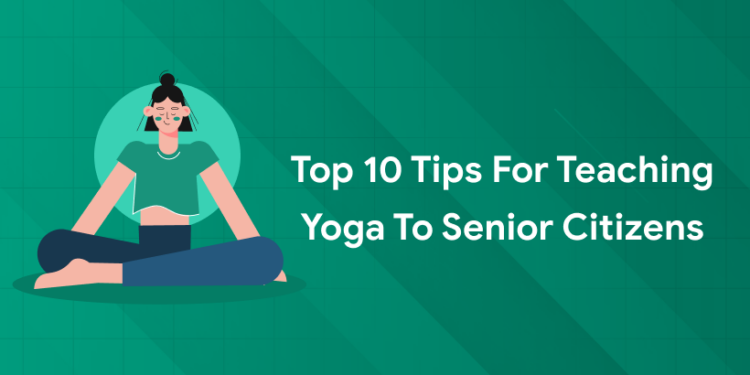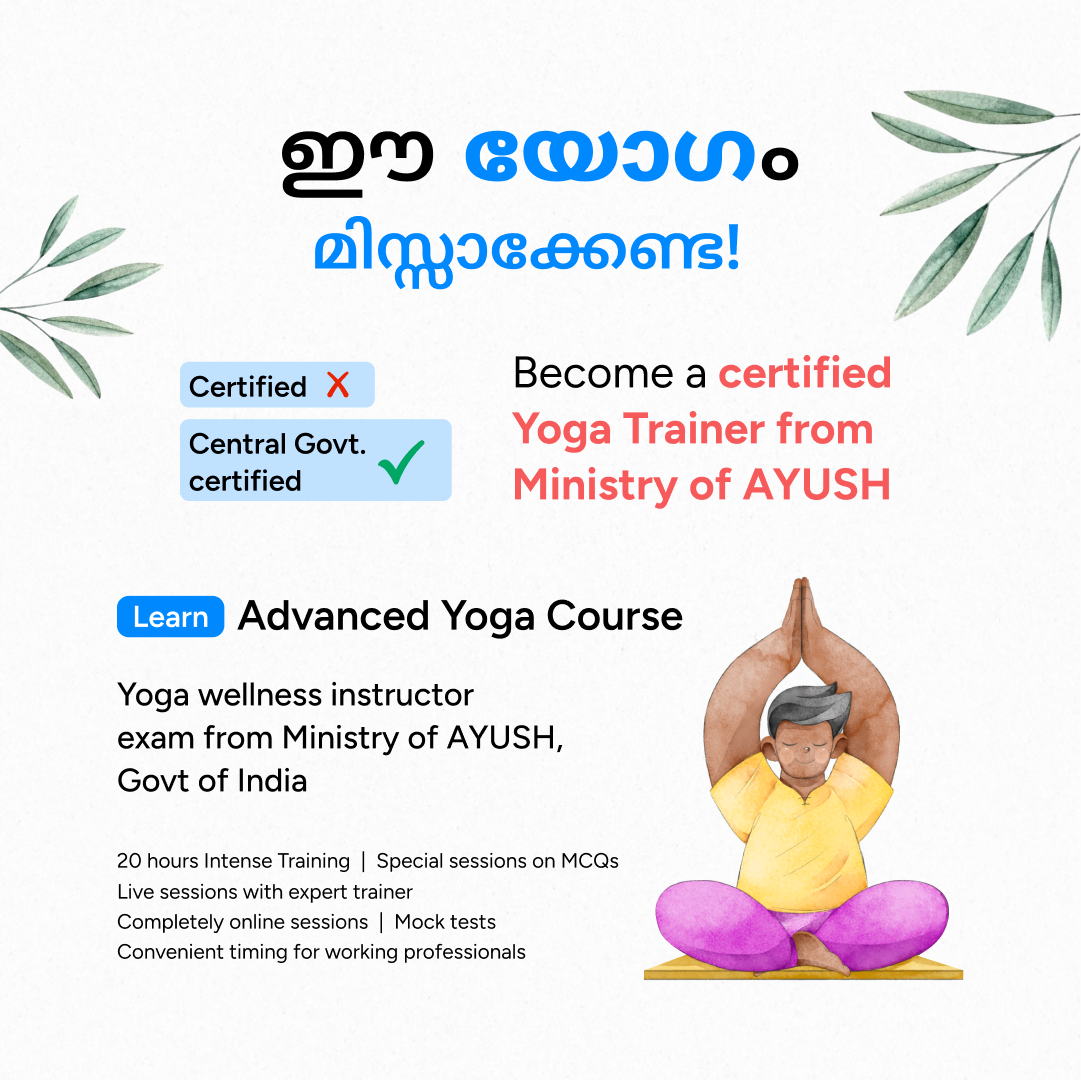Table of Contents
Yoga, an ancient practice, is now popular among people of all generations, regardless of any age barrier. As per several news reports online, yoga is gaining popularity among 70 million senior citizens in the U.S. between the ages of 58 and 76 as its have proven health benefits, including the management of common age-related issues such as joint pain, stiffness, balance problems, or even heart disease.
Yet, teaching yoga to this demographic is not an effortless task and requires patience and a deep understanding of their limitations. The instructors should need a clear knowledge about how aging affects the body and mind, and be able to modify yoga asanas to suit age-related challenges. In this article, we have outlined the top 15 tips for teaching yoga to senior citizens, ensuring a fulfilling and safe practice for all.
Get Certified, Get Confident! Join Our Yoga Teacher Training Course!
Top 15 Tips for Teaching Yoga to Senior Citizens
Teaching yoga to senior citizens requires a holistic approach that focuses on safety, accessibility, and encouraging overall well-being. From warm-up to regular asanas, each aspect of yoga movements should be guided and practiced to meet the needs of senior practitioners. Below, we will provide a few tips to teach yoga asanas to aging citizens. Explore these tips to be equipped to serve the senior population with compassion.
1. Build a Supportive Environment
Set a warm, friendly environment where seniors can feel supported. Encourage conversation among participants and provide adjustments and support as required.
2. Prioritize Safety
When teaching yoga to senior citizens, safety should always consider first. To avoid injuries, give precise advice on good alignment and posture. Advise participants to pay attention to their bodies and adjust poses as necessary. Remind them to respect their physical limitations and to refrain from overdoing it.
3. Compassion and Patience
Teach yoga with compassion, empathy, and patience. Recognize that every person could have particular age-related problems and adjust your strategy appropriately.
4. Flexibility
Be flexible and adaptable in your teaching style, keeping in mind that every senior has different requirements, skills, and preferences.
5. Begin Slowly
Since many seniors may not have as much flexibility or elasticity as youngsters, it’s important to start yogas with gentle progress to more challenging poses. Start with warm-up and ease into the exercise, like basic seated or reclining asanas.
6. Educate
Take time teaching to seniors the benefits of yoga and the huge impact that it may have on their physical and emotional health. Give guidance ablout balanced diets, stress reduction, and appropriate nutrition.
7. Give Clear Instructions
When explaining poses and transitions, use simple language that everyone will understand, and try to avoid particular terminologies and terms.
8. Emphasis on Meditation
Add exercises that promote mindfulness in yoga lessons, such as guided meditations and techniques that aid in less stress, thinking more clearly, and having a stronger sense of contentment and serenity.
9. Yogic breathing exercises
Practice yogic breathing exercises such as deep breathing, Pursed lip breathing, nostril breathing, and other pranayamas to encourage seniors to focus on their breath throughout the practice. It will help to reduce stress, improve lung function, enhance relaxation, and improve their overall well-being.
10. Provide Private Sessions
Take into consideration providing seniors with specific health concerns or aspirations with private yoga sessions, as they might benefit from more individualized attention.
11. Seated Excersies
Try seated exercises such as Knee extensions, Leg raises, neck and head movements, chakki etc will improve flexibility, strength, coordination, blood circulation, balance, and overall health. Using chairs as a props to support both seated and standing poses, yoga can become accessible to individuals with various physical abilities.
12. Utilize Support Equipment
While performing restorative postures and relaxation techniques, make use of props such as pillows, cushions, or bolsters to offer extra comfort and support.
13. Encourage Regular Practice
Assist elders in starting a regular yoga practice at home by offering them the tools and direction they need to continue on their own.
14. Promote Peer Support
Arrange social activities, workshops, or group outings that provide seniors the chance to get to know one another outside of the classroom.
15. Emphasize Relaxation
To assist seniors in winding down and assimilating the advantages of their practice, set aside time for guided relaxation or yoga nidra (yogic sleep) after each session.
By following these top tips, instructors can create safe and enjoyable yoga classes that promote health and wellness for senior citizens.
About Entri Yoga TTC Course
1: Which of these is the primary goal of yoga practice?
Entri yoga teacher training course provides in-depth training on various aspects of yoga, including anatomy, philosophy, teaching methodology, and more. The curriculum of Entri Yoga TTC is designed for both beginners and experienced practitioners, conducted by experienced yoga teachers. The course helps to improve your knowledge and skills in yoga and become a certified yoga teacher.
























